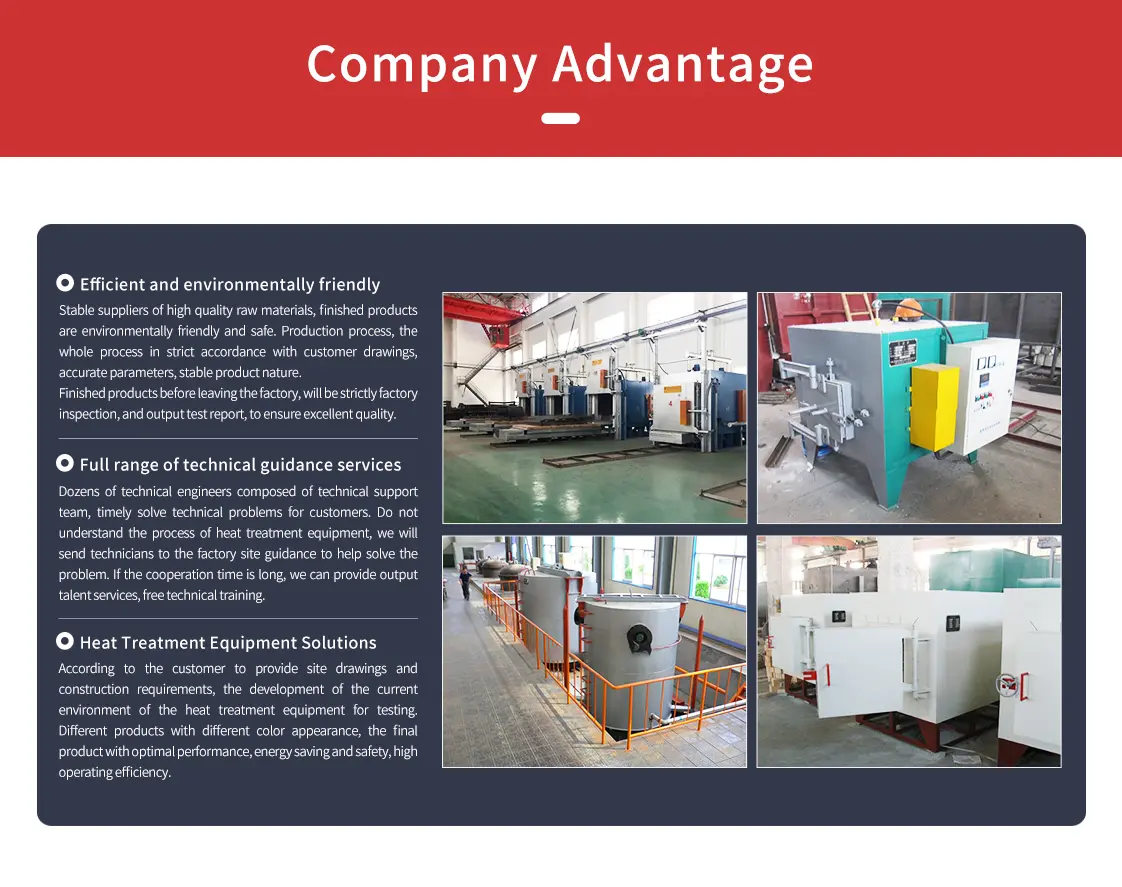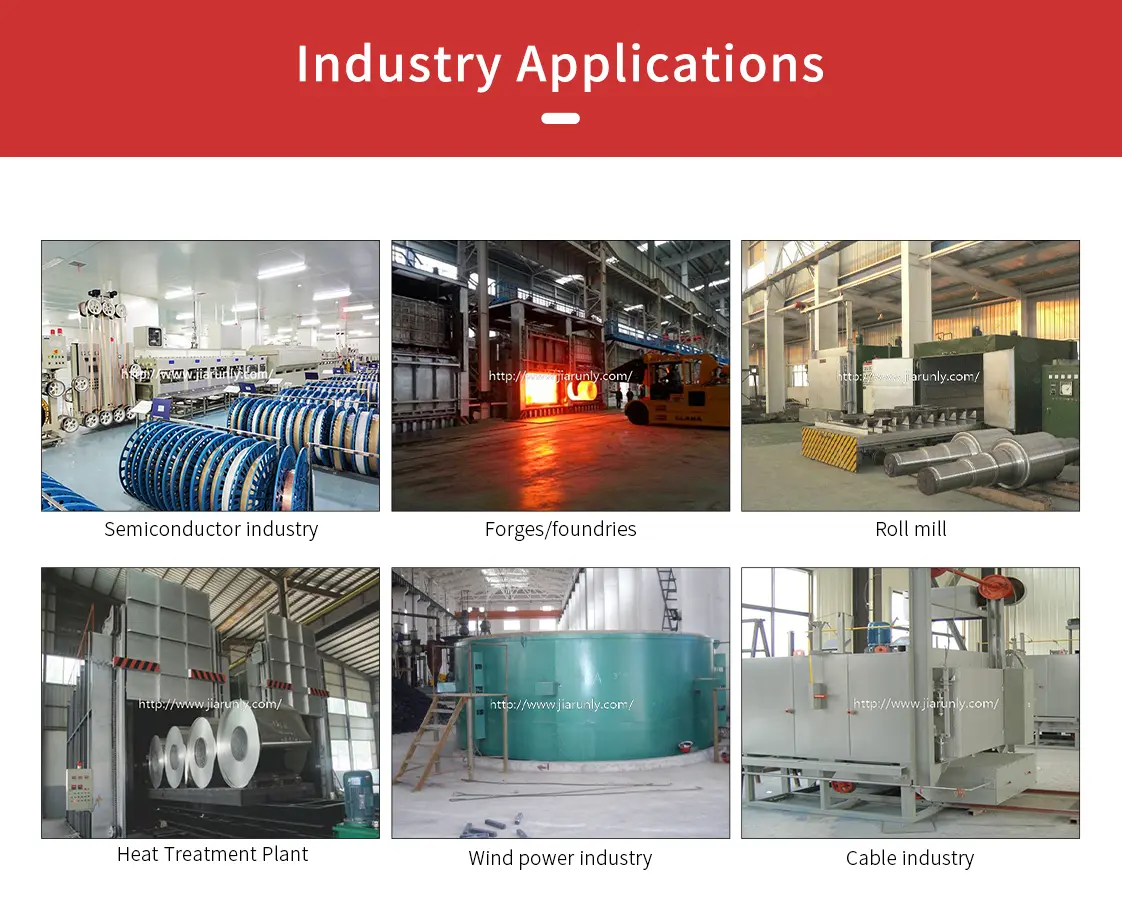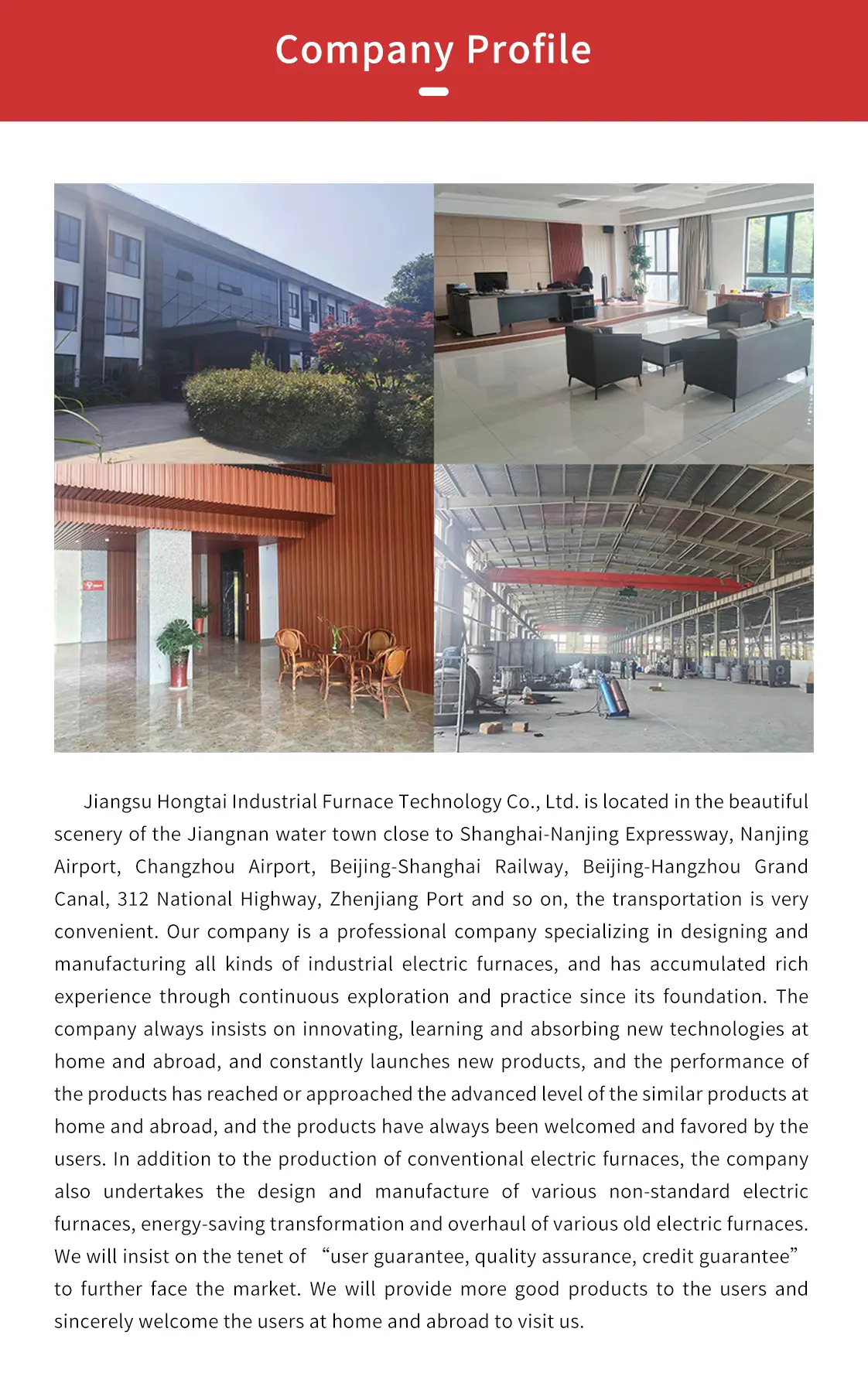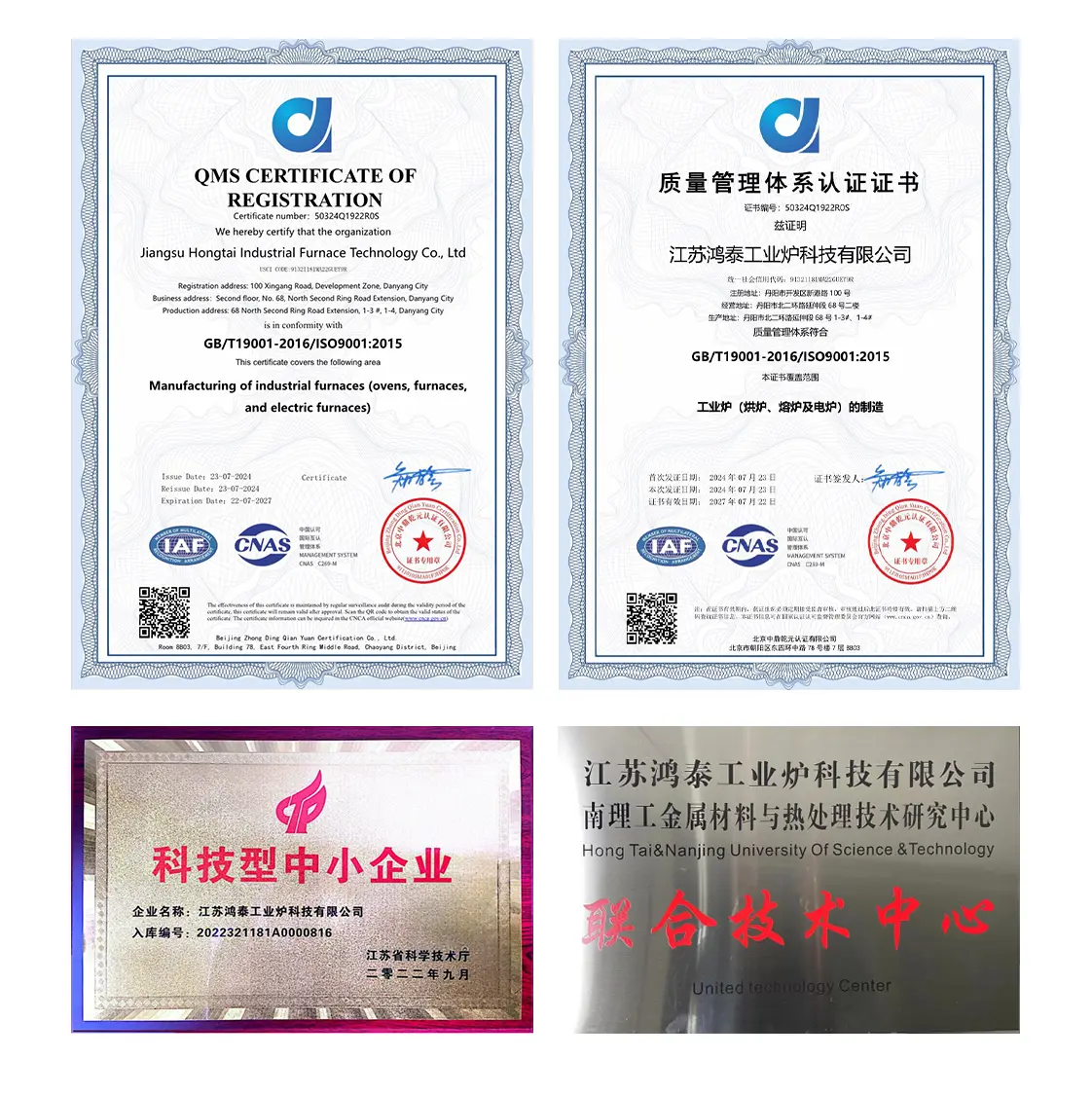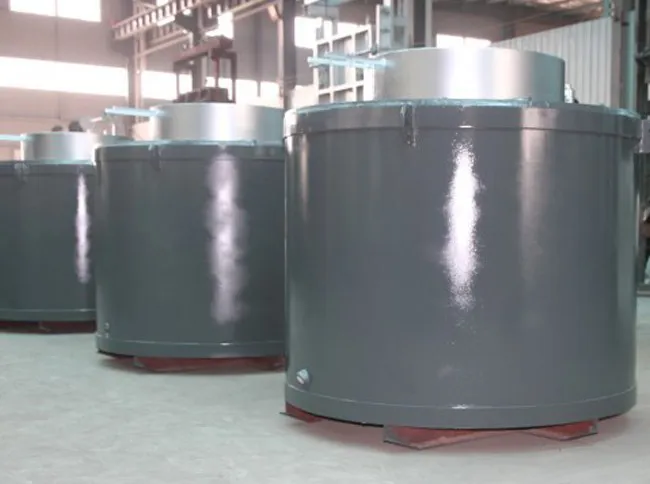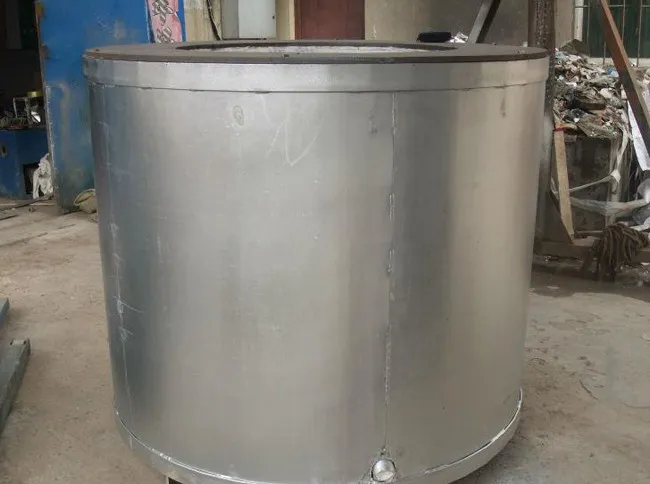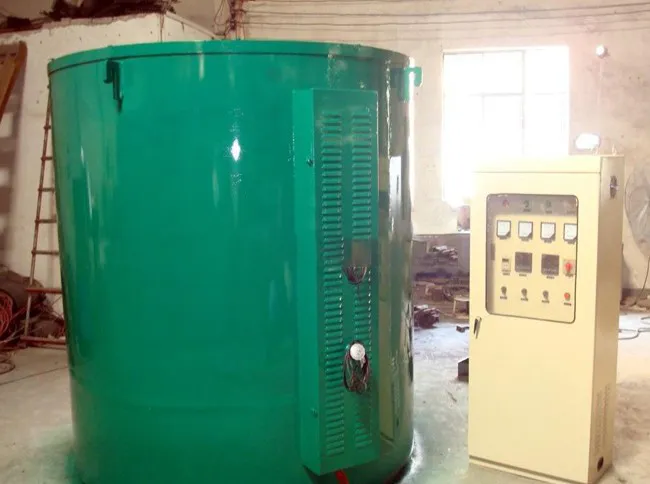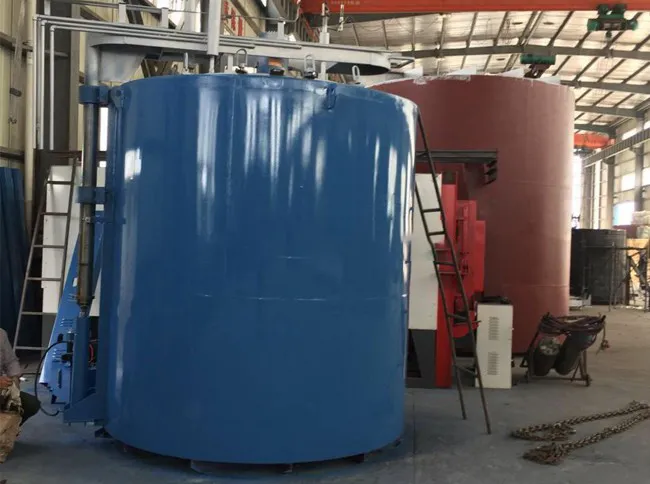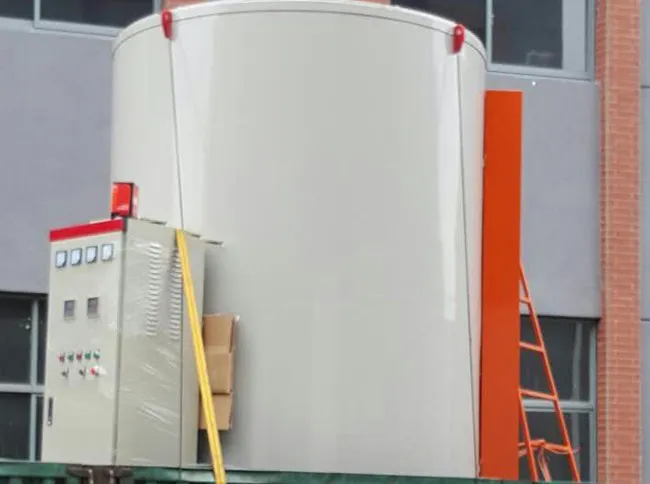- Vacuum furnace & oven
- Annealing Furnace & Oven
- Tempering furnace & oven
-
Carburizing furnace & Ovens
-
Bell Type Furnace
-
Pit Type Furnace & Well Type Furnace
-
Box Furnace & Chamber Furnace
-
Car Bottom Furnace & Bogie Hearth Furnace
-
Nitriding furnace & Ovens
-
Melting furnace & Ovens
- Quenching furnace & Ovens
-
Rapid quenching furnace & Ovens
- Forging furnace & Ovens
- Bright heat treatment furnace & Ovens
Pit-type Annealing Furnace & Ovens
Heat treatment furnace manufacturer,Jiangsu Hongtai Industrial Furnace Technology Co., Ltd
Pit-type annealing furnace is a standard energy-saving cycle operation annealing furnace, mainly for long shafts, rods, pipe fittings and other mechanical parts for annealing heat treatment, but also for normalizing, quenching and other heat treatment.
Pit-type Annealing Furnace & Ovens
Vertical Annealing Solutions for Long and Cylindrical Components with Precision Control
Product Introduction
Our Pit-type Annealing Furnaces & Ovens are specialized industrial heat treatment systems designed for the precise annealing of long, cylindrical, or shaft-like metal components. Annealing is a crucial heat treatment process that involves heating a material to a specific temperature, holding it there for a period, and then slowly cooling it. The primary goals of annealing are to soften the material, relieve internal stresses, improve ductility, refine grain structure, and enhance machinability or cold workability. These vertical furnaces are ideal for parts that require uniform annealing along their entire length to prevent distortion and achieve optimal metallurgical properties. They are commonly used for components that need to be suspended vertically during heat treatment. We offer solutions with excellent temperature uniformity, often achieved through forced air circulation or controlled atmospheres, ensuring consistent and predictable material properties for critical long components.
Core Advantages for Vertical Annealing
- Ideal for Long Components: Vertical design is perfect for annealing long shafts, rods, tubes, and other cylindrical parts, ensuring uniform heat treatment along their length.
- Minimized Distortion: Vertical suspension during heating helps to reduce gravitational sag and minimize distortion, especially for slender components.
- Precise Temperature Control: Advanced systems allow for accurate regulation of annealing temperatures, critical for achieving desired metallurgical properties and preventing defects.
- Excellent Temperature Uniformity: Optimized forced air circulation systems ensure uniform heat distribution throughout the vertically suspended workpiece, leading to consistent material softening and stress relief.
- Space-Efficient Footprint: Vertical design saves floor space, making them suitable for facilities with limited horizontal area.
- Stress Relieving: Effectively relieves internal stresses induced during manufacturing processes, preventing cracking and improving dimensional stability.
- Automated & Safe Operation: Integrated PLC control with comprehensive safety interlocks, real-time monitoring, and data logging for reliable and secure operation.
Technical Specifications
| Parameter | Unit | Range/Value | Notes |
|---|---|---|---|
| Maximum Working Temperature | °C | Up to 1100 | Depending on material and annealing type |
| Heating Method | - | Electric, Gas-fired | Selectable based on energy source availability |
| Atmosphere Control | - | Air, Inert Gas (N2, Ar), Hydrogen, Vacuum | For bright annealing or to prevent oxidation/decarburization |
| Rated Power/Fuel Consumption | KW / m³/h | Varies | Efficient heating systems |
| Working Chamber (Dia. × Depth) | mm | Customizable | Designed for long and cylindrical components |
| Temperature Uniformity | °C | ±5 (typical) | Ensures consistent annealing results |
| Control Accuracy | °C | ±1 | Advanced PID control |
| Cooling Method | - | Slow Furnace Cooling, Air Cooling | Controlled cooling rates for desired properties |
| Control System | - | PLC + Touchscreen HMI | Advanced automation and data logging |
| Safety Features | - | Over-temperature protection, Atmosphere monitoring, Emergency shutdown | Ensures safe operation |
Working Principle
Pit-type annealing furnaces are characterized by their vertical design, where the heating chamber is located below floor level. This configuration is particularly advantageous for heat treating long, slender components like shafts, rods, and tubes, as it allows them to be suspended vertically, minimizing distortion due to gravity during heating. Annealing is a heat treatment process that involves heating a material to a specific temperature, holding it there for a period, and then slowly cooling it. The primary goals are to increase ductility, reduce hardness, relieve internal stresses, improve machinability, and refine the grain structure.
The process begins with loading components into the furnace, typically using an overhead crane or hoist, which lowers them into the heating chamber. Once loaded, the furnace heats the components to the desired annealing temperature, which can vary significantly depending on the material and the specific type of annealing (e.g., full annealing, process annealing, spheroidizing annealing). To ensure excellent temperature uniformity, which is crucial for consistent annealing results, these furnaces are typically equipped with powerful forced air circulation fans or operate under controlled atmospheres. These systems ensure that all parts of the load receive uniform heat treatment.
During the soaking period, atomic diffusion occurs, allowing the material's microstructure to transform. For example, in steel, this might involve recrystallization and grain growth, leading to a softer, more ductile state. After soaking, the material is cooled slowly, often within the furnace itself, to allow for further microstructural changes and to prevent the reintroduction of stresses. The controlled cooling rate is critical for achieving the desired final properties. The entire process is precisely controlled by advanced PLC systems, ensuring repeatable and high-quality results for various industrial applications involving elongated components.
Process Flow
Loading Components
Long components are vertically loaded into the pit-type furnace using an overhead crane.
Heating to Annealing Temperature
Components are heated uniformly to the precise annealing temperature in the vertical chamber.
Soaking Period
Components are held at the annealing temperature for a specified duration to allow microstructural transformation and stress relief.
Controlled Slow Cooling & Unloading
Components are slowly cooled (often within the furnace) to achieve desired properties, then unloaded.
Solving Customer Pain Points
Minimizing Distortion in Long & Slender Parts
Vertical suspension during heating significantly reduces gravitational sag and thermal stresses, minimizing distortion and warping in long shafts and cylindrical components during annealing.
Ensuring Uniform Annealing Along Component Length
Optimized vertical forced air circulation ensures consistent heat distribution along the entire length of elongated parts, leading to uniform material softening, stress relief, and grain refinement.
Space Constraints in Production Facilities
The pit-type design utilizes vertical space, offering a compact footprint compared to horizontal furnaces, making it ideal for facilities with limited floor area.
Achieving Optimal Mechanical Properties for Critical Parts
Precise control over annealing temperatures and uniform heating ensures the desired microstructure formation, leading to optimal softness, ductility, and workability for critical long components.
Safe & Efficient Handling of Heavy Long Components
The vertical loading and unloading system, often with overhead cranes, provides a safe and efficient method for handling heavy and long components, reducing manual labor and risks.
Preventing Oxidation & Decarburization with Controlled Atmospheres
Optional controlled atmosphere capabilities protect sensitive materials from surface degradation during high-temperature annealing, preserving material integrity and finish.
Customer Success Stories
A manufacturer of large industrial pipes reported a significant improvement in the formability and weldability of their products after implementing our pit-type annealing furnace, attributing the improvement to enhanced ductility and uniform grain structure.
Customized Services
We offer comprehensive customization services for our pit-type annealing furnaces, including tailored chamber dimensions (diameter and depth), specific heating methods (electric or gas), and integration with various controlled atmosphere systems (N2, Ar, H2, Vacuum). Our engineering team works closely with clients to design solutions that precisely meet their unique component lengths, diameters, desired material properties, and production throughput requirements, ensuring optimal performance and seamless integration into their heat treatment processes.
Related Keywords
pit type annealing furnace, vertical annealing oven, long component annealing, cylindrical parts annealing, shaft annealing, heat treatment annealing, stress relieving, precision heat treatment, metallurgical equipment, steel annealing, alloy annealing, vertical heat treatment, minimal distortion annealing
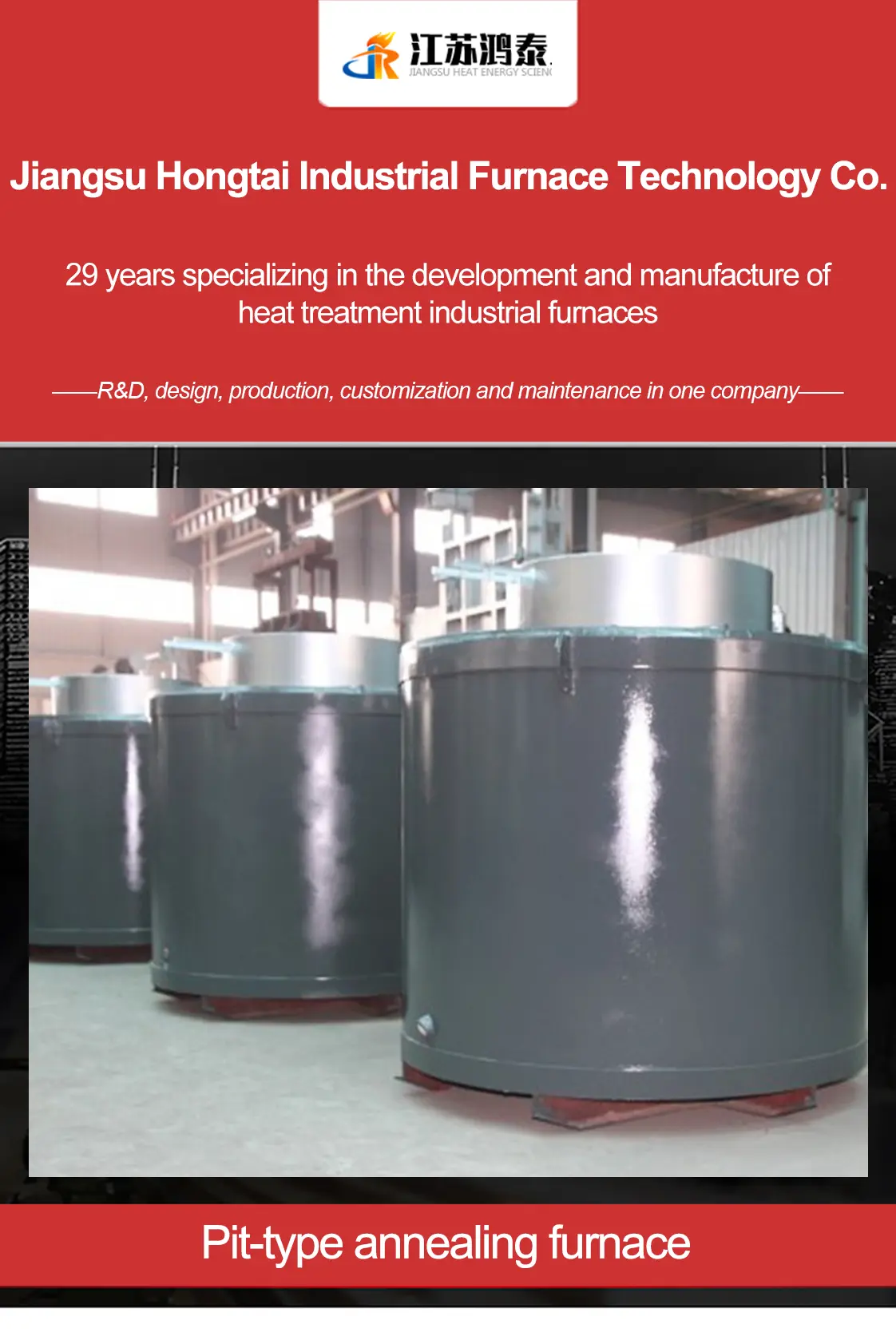
Industrial Value and Application Products
Usage:
Pit-type annealing furnace is a standard energy-saving cycle operation annealing furnace, mainly for long shafts, rods, pipe fittings and other mechanical parts for annealing heat treatment, but also for normalizing, quenching and other heat treatment. Long rod-shaped workpieces, such as gun barrels, turbine shafts, rotors, etc. are vertically loaded and heated in the pit-type furnace, which can avoid bending and deformation.
Structure Introduction:
Pit-type annealing furnace shell for the pit-type furnace structure, by the high alumina refractory bricks and aluminum silicate fiber composite insulation, in the use of all-fiber to do the furnace lining insulation, the heating element is used in general to use high-temperature resistance band heating, longer service life, not easy to break. I plant pit-type annealing furnace cover of all automatic control are protected, when the furnace cover is opened automatically cut off the control power supply, the furnace cover is tightly closed before the start of heating, to ensure that the operator.
The role of the pit-type annealing furnace:
Pit-type annealing furnace is suitable for vertical heat treatment of shaft parts and other mold steel, alloy steel, automotive parts and other mechanical parts of the annealing, quenching and other heat treatment purposes.
Adopting quality and energy-saving composite furnace lining, the energy-saving effect is remarkable.
Equipped with gas circulation mechanism, large flow rate, uniform furnace temperature.
Special lid opening and closing structure effectively reduces labor intensity.
Professional self-tuning PID high-precision intelligent table can be used, high precision temperature control.
Equipped with electrical interlock and temperature protection device, reliable operation and use.
The microcomputer control cabinet can be equipped with 0.1~0.2 level high-precision temperature-control instrumentation, coupled with the special furnace structure, can meet the needs of beacon class (±1.5 ℃) high precision.
